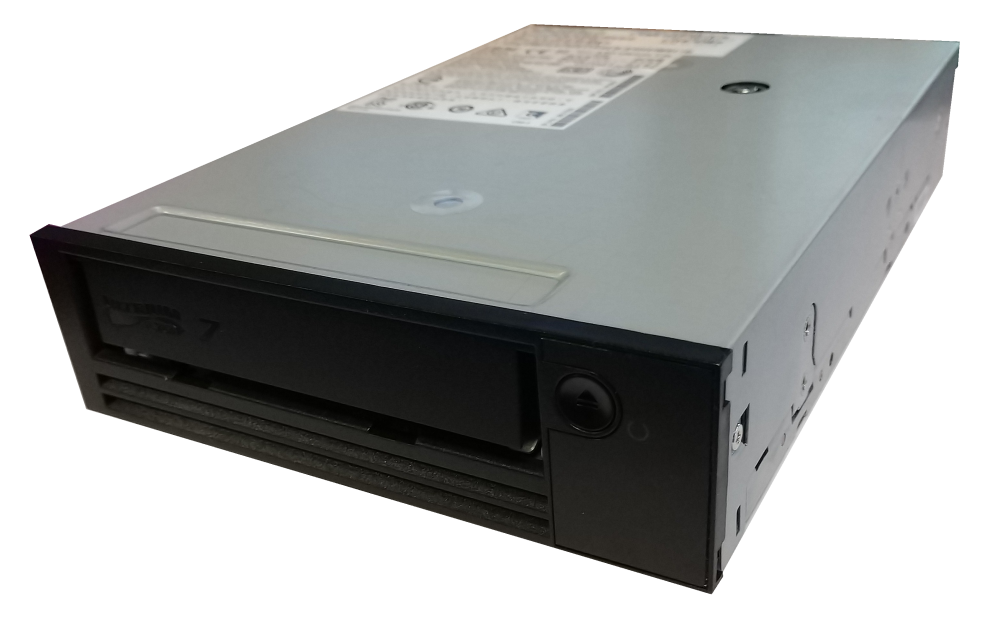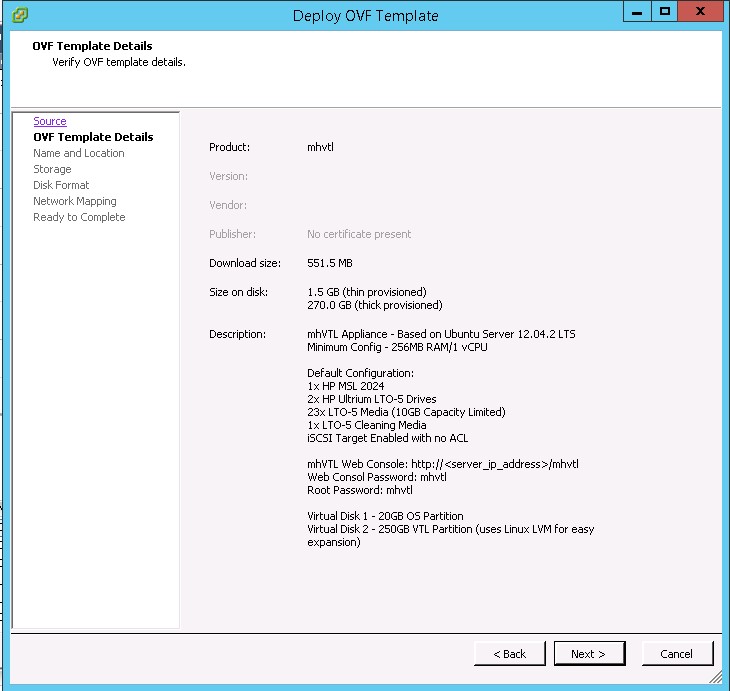Install Tape Drive Vmware Esxi Client

InformationWeek.com: News, analysis and research for business technology professionals, plus peer-to-peer knowledge sharing. Engage with our community. What's in the Release Notes. The release notes cover the following topics: What's New; Earlier Releases of ESXi 6.5; Internationalization; Patches Contained in this.

VMware Compatibility Guide - Storage/SAN Search. VMware ESX software has been tested and deployed in a variety of storage network environments. Automatic Update Service Stuck At Starting Battle.
Search for the QuickSpecs you are looking for online in Literature server or via Google Custom Search. You can also download QucikSpecs locally on your pc by using. The home page for SPEC, the Standards Performance Evaluation Corporation, a standards body for performance benchmarks. Nessus Plugins Windows. Mozilla Firefox. 55 Multiple VulnerabilitiesMozilla Firefox ESR. 52.3 Multiple Vulnerabilities.
This guide describes the storage devices currently tested by VMware and its storage partners. ESX, ESXi Embedded and ESXi Installable are equivalent products from a storage compatibility perspective. In this guide we only explicitly list ESX compatibility information. If a product is listed as supported for ESX, the product is also supported for ESXi Embedded and ESXi Installable corresponding versions. Note: Boot from SAN (Fibre Channel, Fibre Channel over Ethernet, SAS, or i.
SCSI) is not supported with ESXi version 4. If you are having a technical issue with 3rd party HW/SW and it is not found on this list, please refer to our 3rd Party HW/SW support policy at http: //www.
Third. Party. html. VMware works closely with each of its OEMs to drive towards mutual support of ESX at the time of announcement. Due to different product release cycles, levels of testing, and OEM agreements, not all OEM devices will be supported at the general availability date of a new version of ESX. We recommend contacting the OEM vendor for the best information on when their device is planned to be certified with Virtual Infrastructure. For further details about array firmware, storage product configurations and best practices, please contact the storage vendor. NOTE: The use of an external enclosure, or JBOD connected to a supported SAS/SCSI controller in a supported server is supported, as long as there is no disk sharing among multiple servers or SAS/SCSI cards.
This SAN HCL lists storage devices starting with ESX 3. It does not include older ESX 2. Please contact your storage vendors if you do not find devices certified in the SAN HCL list. Microsoft Windows Failover Cluster with ESX Windows Clustering refers Cluster Services in Windows operating systems in a shared disk configuration between two virtual machines or a virtual machine and a physical system. Such clustering is certified only with a subset of arrays listed in this guide. Previously Failover Clustering was called MSCS. Before installing VMware ESX software with your storage array, please examine the lists on the following pages to find out whether your array and configuration are supported.
Please refer to your storage vendor for more information and configuration details. Windows Failover Cluster support with ESX 3. Below table shows the supported list of Windows OS, FC HBA speed and drivers. Windows Failover Cluster support with ESX 3. MSCS/Failover cluster is supported with ESX 3. VMs running - Windows 2. SP4 and - Windows 2.
SP2. Only 4. Gb Emulex and Qlogic FC HBAs are supported. Windows Failover Cluster support with ESX 4. With native multipathing (NMP), clustering is not supported when the path policy is set to round robin. Please see 'Setup for Failover Clustering and Microsoft Cluster Services' for limitations on MSCS support with PSA. Virtual SCSI adapter and Windows OS supported- LSI Logic Parallel for Windows Server 2.
SP4- LSI Logic Parallel for Windows Server 2. RTM (x. 86 and x.
SP2- LSI Logic SAS for Windows Server 2. SP1. 2. Only 4. Gb Qlogic and Emulex Fibre Channel HBAs are supported. The driver versions supported are as follows: qla.
PSA Plug- ins with ESX 4. ESX 5. x. Array operating modes and path selection behavior are supported through the Pluggable Storage Architecture (PSA) framework. Storage partners may (1) provide their own Multi- Pathing Plug- ins (MPP), (2) use Storage Array Type Plug- ins (SATP) and Path Selection Plug- ins (PSP) offered by VMware 's Native Multi- pathing (NMP) or (3) provide their own SATP and PSP. The plug- ins supported with a storage array are noted in the 'Mode' and 'Path Policy' columns of the 'Model/Release Details' page. The path policy of VMW. If desired, contact the storage array manufacture for recommendation and instruction to set VMW. Please see 'Setup for Failover Clustering and Microsoft Cluster Services' for limitations on MSCS support with PSA.
Note that VMware does not currently support unloading of third- party PSA plug- ins on a running ESX/ESXi host. Installation, upgrade or removal of third- party PSA plug- ins may require a reboot of the ESX/ESXi host. This configuration does not allow for multipathing or any type of failover.* Multipathing - The ability of ESX hosts to handle multiple paths to the same storage device.* HBA Failover - In this configuration, the ESX host is equipped with multiple HBAs connecting to one or more SAN switches.
The server is robust to HBA and switch failure only.* Storage Port Failover - In this configuration, the ESX host is attached to multiple storage ports and is robust to storage port failures.* Boot from SAN - In this configuration, the ESX host boots from a LUN stored on the SAN rather than a local disk.* Direct Connect - In this configuration, the ESX host is directly connected to the array. There is no switch between HBA and the array and each HBA port must be connect directly to a storage port on the array. Multiple storage ports also known as FC target port on single Fiber Channel- Arbitrated Loop are not supported; therefore, daisy- chaining of storage ports within a storage controller, across storage controller, or across multiple arrays is not supported. Windows Failover Clustering is not supported in this configuration. NOTE: Windows Failover Clustering (MSCS) support applies to Windows 2.
SP4, Windows 2. 00. RTM, SP 1, R2 and SP 2. For ESX version requirements for these operating systems in cluster environment, please refer to http: //kb. Windows Failover Clustering is supported only with a limited set of HBAs; please refer to the I/O Compatibility Guide (http: //www.
NOTE: MSCS is not supported for Direct Connect. NOTE: Only footnoted storage arrays are supported with Brocade 4.
HBAs. NOTE: Unless otherwise footnoted, all fibre channel arrays are supported with both 2. Gb and 4. Gb FC HBAs on ESXNOTE: For ESX 3. U2 onwards unless otherwise footnoted, all fibre channel arrays are supported with 2. Gb, 4. Gb and 8. Gb FC HBAs on ESX. NOTE: For devices with external SAN storage support, please refer to Storage Virtualization Device (SVD). NOTE: Unless otherwise noted, all fibre channel storage products are supported in a boot from SAN configuration.
NOTE: End- to- end connectivity at 8. Gbps FC speed is supported with 8. G FC arrays only if the product details has prefix of '8. G FC' or is footnoted. Otherwise support for 8. G FC arrays is limited to up to 4.
Gbps speed only. Storage Virtualization Device (SVD)VMware supports Storage Virtualization Devices (SVD) with ESX 3. ESX/ESXi 4. x and ESXi 5. Back- end array and the SVD are both required to be certified with the same ESX release.* Do not share the same LUN of the backend storage array between SVD and any other host.* Only devices that are listed with Array Type SVD are allowed to connect to external Fibre Channel SAN storages. Storage Arrays supported with FCo. E CNAs. VMware supports Fibre Channel (FC) Arrays connected to Fibre Channel Over Ethernet (FCo.
E) Converged Network Adapters (CNAs) with ESX 3. U4 and newer releases. It allows the host to connect to the i.
SCSI storage device through standard network adapters. The software i. SCSI adapter handles i. SCSI processing while communicating with the network adapter. With the software i. SCSI adapter, you can use i. SCSI technology without purchasing specialized hardware. Hardware i. SCSI Adapter.
A hardware i. SCSI adapter is a third- party adapter that offloads i. SCSI and network processing from your host. Hardware i. SCSI adapters are divided into categories. Dependent Hardware i.
SCSI Adapter: Depends on VMware networking, and i. SCSI configuration and management interfaces provided by VMware. This type of adapter can be a card that presents a standard network adapter and i. SCSI offload functionality for the same port.